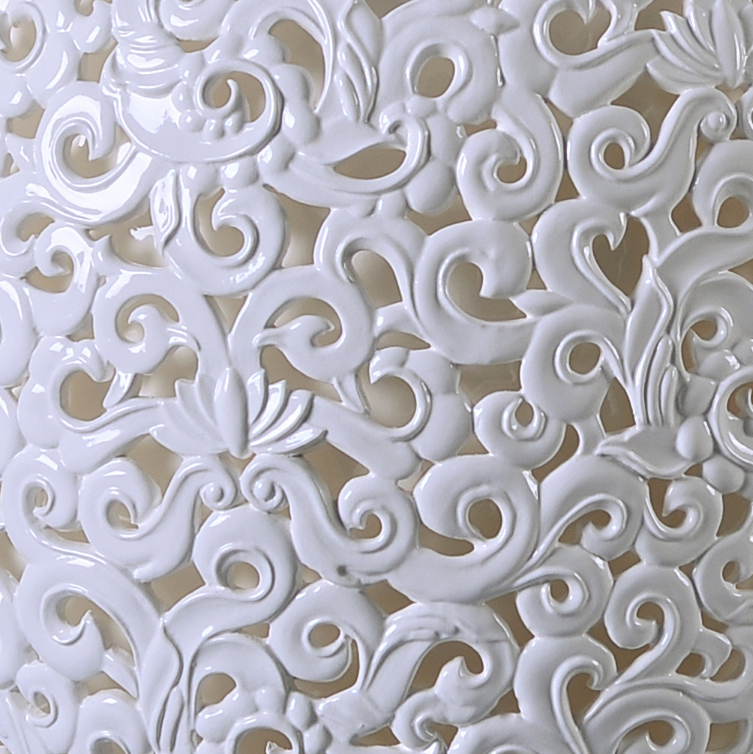Welcome back to NewsFile, Cfile’s weekly roundup of happenings and tidbits from the worlds of contemporary ceramic art and contemporary ceramics. Kicking off this week, we have an electrifying scientific discovery in the electroceramic industry.
In contrast to the traditional ceramic industry, in the electroceramic industry has used ceramic as a ferroelectric material. The American Ceramic Society writes that means the ceramic is able to spontaneously polarize under strain, making these materials useful for a whole host of applications.
Ferroelectric materials, particularly polycrystalline ceramics, have attracted considerable interest for applications in a variety of fields, such as high dielectric constant capacitors, piezoelectric transducers, actuators, ferroelectric random access memories, electro-optic devices and more.
But because of the inherent brittleness of most ferroelectric materials, scientists have struggled, with some success, to develop a material that is both ferroelectric and very flexible.
Scientists have discovered that some organic ferroelectric materials composed of planes glide past one another, providing them with more flexibility. However, these new materials aren’t ceramic—they’re organic crystals.
In addition to a whole host of potential applications, there’s one other area of huge potential for flexible ferroelectrics: data storage.
Ian McDonald Named New Cranbrook Artist in Residence

Ian McDonald
Ceramist Ian McDonald has been named the new Artist-in-Residence at Cranbrook Academy of Art’s Ceramics Department. McDonald will replace Anders Ruhwald, who will leave at the end of the academic year. McDonald will begin his tenure in September.
McDonald comes to Cranbrook from Eugene, Oregon, where he most recently was teaching in the Ceramics Department at the University of Oregon. Prior to that, he serves as a faculty member of the Sant Francisco Art Institute from 2003 to 2015.
Cranbrook Director Christopher Scoates says the Academy is forging a new path.
The Academy is entering a new era, with several Artists-in-Residence bringing contemporary ideas into our studio and sharing them with our students. It is through this practice that Cranbrook will continue to maintain its status as one of the top programs in the world.
McDonald’s works has been exhibited throughout the United States, Europe and Japan, including Play Mountain and the Curators Cube in Tokyo; Yerba Buena Center for the Arts and Rena Bransten Gallery in San Francisco; The New Wight Gallery at UCLA in Los Angeles; and most recently his first solo show, Thumb, Index, Index, Thumb, at Patrick Parrish Gallery (New York City, July 12 to September 1, 2016).
Wallpaper writes McDonald first established a visual and architectural ceramic vocabulary, which he then assembled to form a single vessel.
The title refers to making a frame with your hands,’ he explains. ‘I make this vocabulary of forms, and improvise within that frame.’ Select works consist of clay objects arranged on custom powder-coated steel trays, while others stand on their own. The ceramics follow the same making process as those in ‘Parts and Pottery’, with a few twists: some were extruded, then chopped up and re-assembled; others feature asymmetrical appendages that were sliced off of another piece. ‘I see them as constructed objects,’ McDonald says. ‘Even though they’re thrown at the wheel in parts, they are also built later on. The pots themselves are constructed.’
McDonald’s work has been featured in Artforum, Ceramics Monthly, and The New York Times.
Text (edited) from Cranbrook Academy of Art.
ASU Exhibition Honors Chinese Ceramics

Xu Ruifeng, Change’s Ascent to the Moon, Porcelain, Image courtesy of the artist. Click for larger image
The history of Chinese ceramics dates all the way back to the Paleolithic era, with different regional traditions evolving over time and remains ones of the most significant forms of ceramics globally.
Arizona State University Art Museum Ceramics Research Center celebrates this rich history and takes a closer look at how artists have reshaped those traditions in the new exhibition Flowing Beyond Heaven and Earth (Tempe, Arizona, February 18 – April 8, 2017). The show features over 60 pieces from 33 artists, the majority of whom have been recognized as national masters in China.
“Although these artists are revered in their native China, most do not show their work in the United States” says ASU Art Museum curator Garth Johnson. “This exhibition is a rare opportunity for us to understand the important role that ceramics play in Chinese cultural life.”

Junya Shao
The exhibition is coordinated by artist Xiaoping Luo, who lives in Arizona part-time. Luo partnered with the China Ceramics Industrial Association, which is sponsoring the exhibition to foster international exchange.
“The exhibition’s title, Flowing Beyond Heaven and Earth, is taken from a poem by Tang Dynasty Poet Wang Wei,” says Luo. “In Chinese contemporary ceramics, twined streams of heritage and innovation flow together to form a mighty river.”

Chang Yen Chuan, Click for larger image

Chang Yen Chuan, (detail), Click for larger image
Text and images (edited) from ASU.
Sephora Debuts New Ceramic Brush
Round brushes are often the stuff of nightmares for many people. Watching a hairdresser effortlessly rotate a round brush adding bounce, body and shine to one’s hair can easily instill a sense of bravery. Once attempted autonomously, however, it can quickly turn into a DIY tangle.
Sephora aims to stave off that phenomenon with its new ‘Bounce’ ceramic hairbrush. The barrel is coated in ceramic to retain and distribute heat evenly and to prevent damage while brushing and styling hair at high temperatures.
It has wavy, temperature-resistant synthetic nylon bristles that are infused with tourmaline ions so are soft and gentle on the hair, reducing frizz for faster blow-drying time. While the ergonomic handle and lightweight design allow for easy maneuvering when styling, straightening and adding volume.

Sephora Bounce (detail), Click for larger image
Do you love or loathe these tidbits and happenings from the worlds of contemporary ceramics and contemporary ceramic art? Let us know in the comments.







Add your valued opinion to this post.